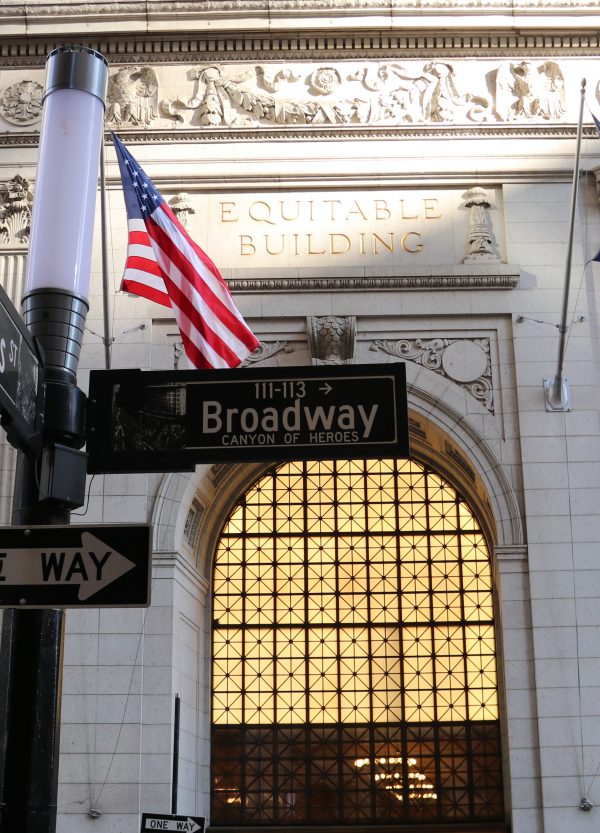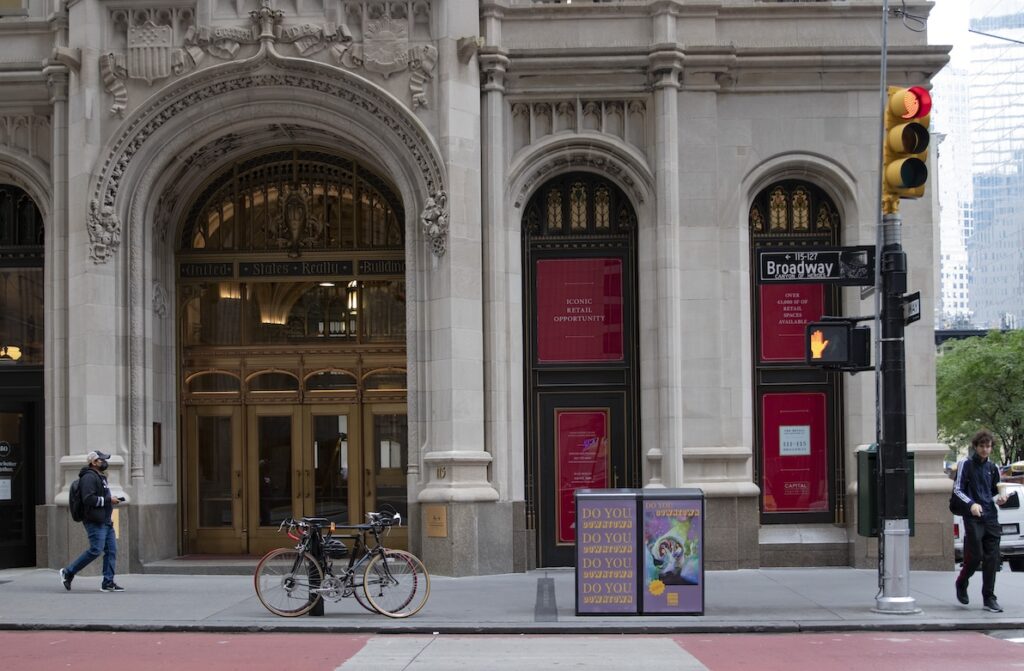Streetscape

Making the streets of Lower Manhattan more attractive and convenient for pedestrians is a top priority for the Downtown Alliance.
Broadway Streetscape Program

The Downtown Alliance’s $20 million streetscape program gave lower Broadway a sophisticated look that is at once contemporary and classic. Recognized by the Art Commission of the City of New York for its unique style and elegance, the program transformed 26 blocks to to be more inviting and contemporary. Elements include:
- Reconstruction of all the sidewalks and curbs along lower Broadway
- 81 Pedestrian light poles with energy-efficient LED bulbs that provide bright and welcoming lighting
- Street furniture including protective bollards, bike racks, and sign poles, in our signature black and silver design
- Granite markers commemorating all ticker-tape parades up lower Broadway
This Broadway Streetscape Program was made possible in part by a grant from the Lower Manhattan Development Corporation, which was funded through Community Development Block Grants from the U.S. Department of Housing and Urban Development.
Street Signs

Including the elements of the Broadway streetscape program, the Alliance maintains over 900 pieces of permanent street furniture and signage throughout the district, such as illuminated and traditional street signs.
Distinctive to our district, the old green-and-white street signs have been replaced with elegant black-and-white signs. These signs contain the street name and range of address numbers on each block and feature photo images representing iconic Lower Manhattan landmarks. As you walk the streets of Lower Manhattan, the images change to represent the landmark or attraction that is closest.
Along main thoroughfares like Broadway, Water Street, Fulton Street, South Street, Church Street, Trinity Place, Battery Place and State Street, we have upgraded to illuminated street signs for improved visibility.
Stone Street

One of the first paved streets in the “New World,” Stone Street has been restored to its former glory. Storefronts that once stood empty and neglected are now home to some of the neighborhood’s most successful and bustling dining destinations.
We partnered with the Landmarks Preservation Commission to designate Stone Street as a historic district, a move that allowed the Commission to apply for federal funds to restore the street. We also teamed up with the city’s Department of Transportation and Department of Design and Construction to bring Stone Street back to life. The project, designed by Beyer Blender Belle Architects, set the stage for new commercial development while preserving Stone Street’s historic charm.
The Downtown Alliance coordinated the Stone Street reconstruction. The city installed a new street bed, lined with cobblestones duplicating the street’s original paving, and also laid new bluestone sidewalks and a granite curb. Old-style lighting fixtures were also installed. Stone Street has maintained its charming historic character while reinventing itself as Lower Manhattan’s new “restaurant row.”